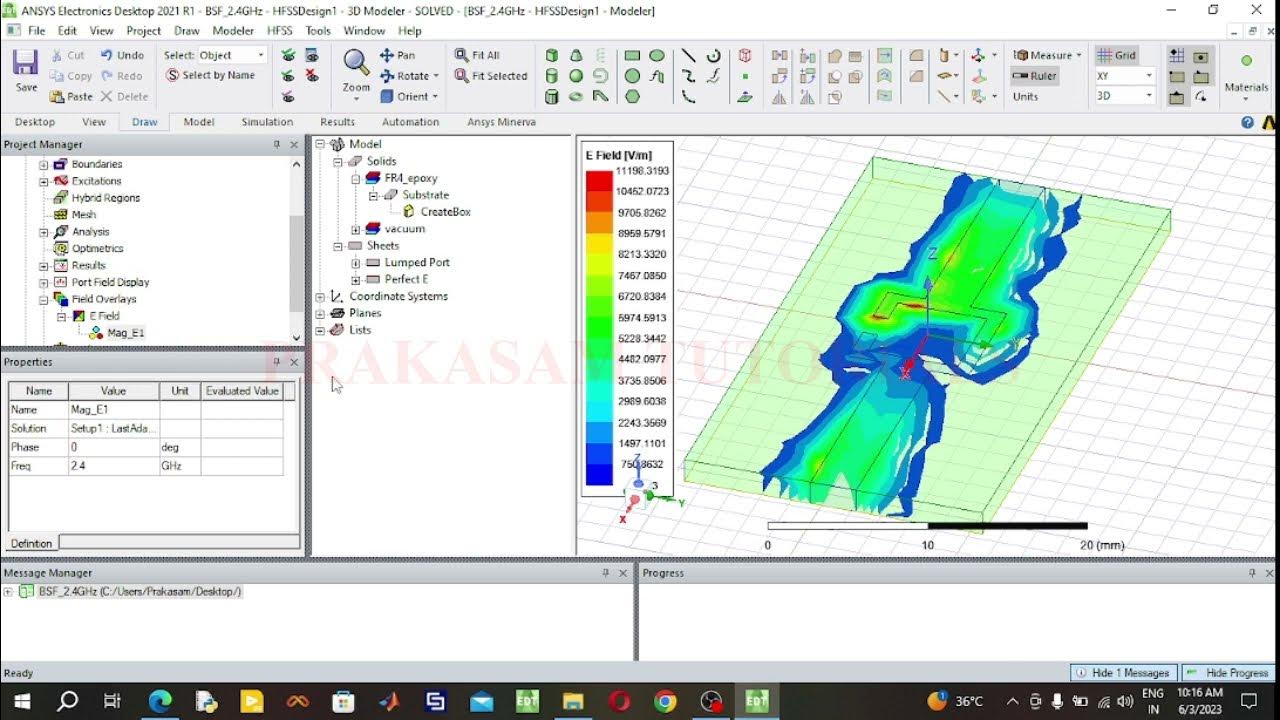Desain Trolly / Kereta Dorong 2 Roda
Summary
TLDRIn this tutorial, the process of designing a two-wheeled trolley using CAD software is demonstrated. The video covers steps such as sketching the basic body, rotating it into a 3D view, and adding key details like curves, support structures, and wheel designs. The trolley’s frame is extruded and reinforced, with final touches including material application and symmetrical mirroring for a balanced model. The tutorial concludes with the assembly of the trolley and the addition of realistic materials, giving users a clear guide to creating a functional, detailed 3D model.
Takeaways
- 😀 The design begins with a 2D sketch of the trolley, focusing on tilting the left and right sides for the body structure.
- 😀 The body profile is joined and filleted with a 20mm radius to smoothen the design edges.
- 😀 The 2D sketch is rotated along the X-axis to form a 3D model, creating a standing trolley frame.
- 😀 A curve is added to the trolley profile, and adjustments are made to ensure the correct shape and fit.
- 😀 The cargo area is sketched and formed with a curving shape, and the design is mirrored for symmetry.
- 😀 A back support structure is added to help the trolley stay upright, with a rectangular piece extruded for thickness.
- 😀 The wheel support pipes are created using a circular profile and are adjusted to ensure proper alignment.
- 😀 The wheels are placed into the design, and additional pieces are added to strengthen the frame and wheel connections.
- 😀 A thin plate is used to cover gaps in the wheel, protecting it from elements like rain while enhancing aesthetics.
- 😀 The trolley is finalized by applying an array function to repeat design elements and completing the 3D model with mirroring for symmetry.
Q & A
What is the primary purpose of the two-wheel trolley described in the script?
-The primary purpose of the two-wheel trolley is to transport goods efficiently, making it useful for carrying heavy or bulky items.
What is the first step in creating the trolley design in the video?
-The first step involves sketching the profile of the trolley, focusing on the angled sides that will define the body and structure.
Why is the 3D rotation performed on the initial sketch?
-The 3D rotation is performed to position the trolley upright along the x-axis, which makes it easier to visualize the structure in three dimensions.
How does the design handle the curvature of the trolley's structure?
-The design introduces a curvature by using approximate measurements to create smooth, flowing lines, especially in the grid and the mesh areas where goods will be placed.
What role does the back support play in the trolley design?
-The back support serves two functions: it stabilizes the trolley when it is standing, and it can also act as a lever for lifting or loading items onto the trolley.
How are the wheel and support structures designed in the process?
-The wheels are modeled as pipe-like structures, and the supports are designed to be strong, with specific attention given to their positioning and functionality.
What is the purpose of the protective plate over the wheels?
-The protective plate serves to shield the wheels from external elements, like rain or debris, preventing them from affecting the trolley's performance.
What does the term 'Solid Union' refer to in the modeling process?
-In the modeling process, 'Solid Union' is a boolean operation used to merge multiple parts of the design into a single solid structure, ensuring everything is combined seamlessly.
How is the final grid pattern or mesh applied to the trolley?
-The grid or mesh is applied by creating a profile and adjusting it according to the placement of the goods. It is designed to hold items securely while maintaining the trolley's structural integrity.
What happens at the final step of the design process?
-At the final step, the model is reviewed, minor adjustments are made to proportions, and the design is completed by ensuring everything is joined and ready for visualization, including adding materials for realism.
Outlines

This section is available to paid users only. Please upgrade to access this part.
Upgrade NowMindmap

This section is available to paid users only. Please upgrade to access this part.
Upgrade NowKeywords

This section is available to paid users only. Please upgrade to access this part.
Upgrade NowHighlights

This section is available to paid users only. Please upgrade to access this part.
Upgrade NowTranscripts

This section is available to paid users only. Please upgrade to access this part.
Upgrade NowBrowse More Related Video
5.0 / 5 (0 votes)





